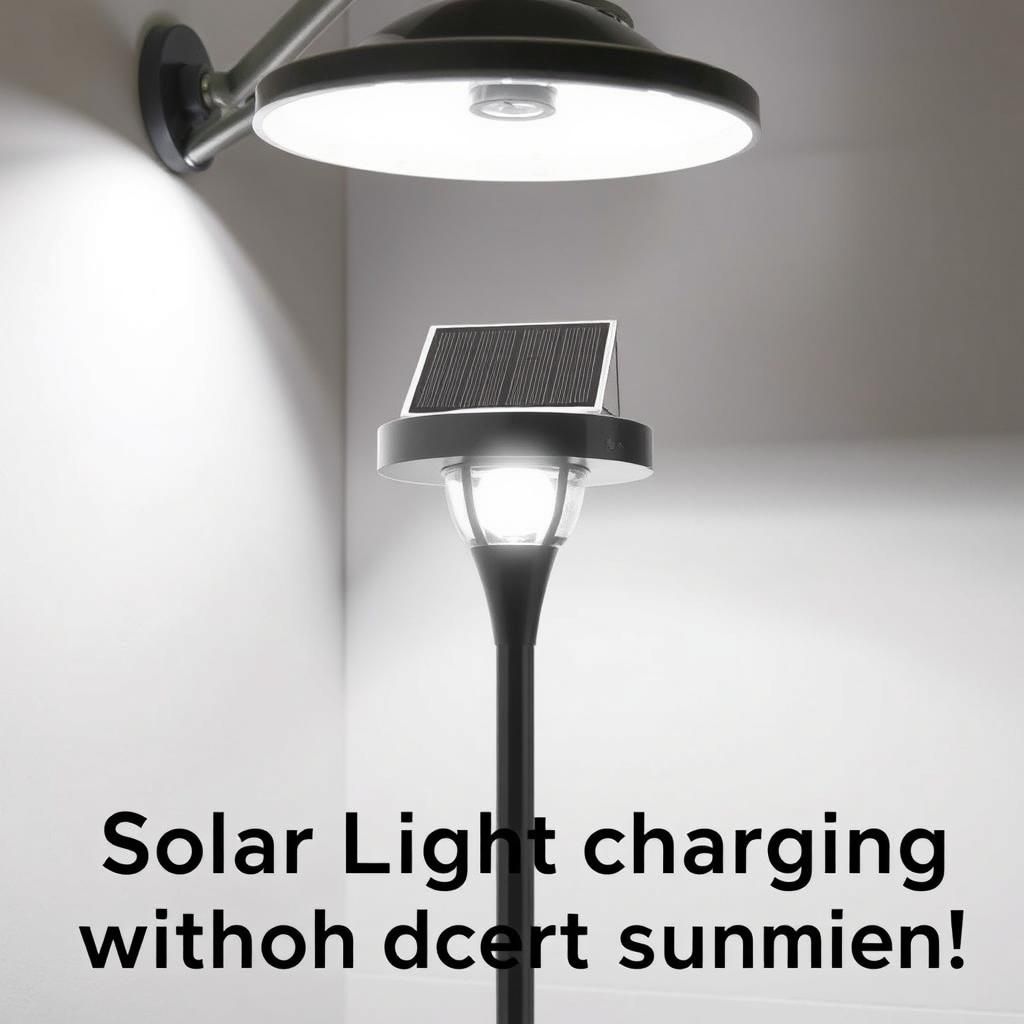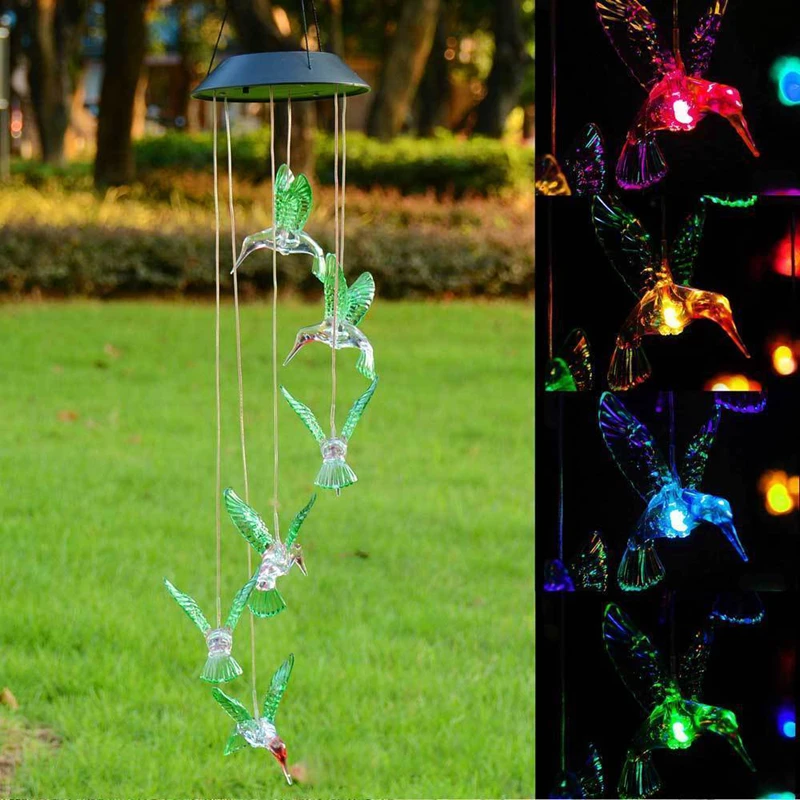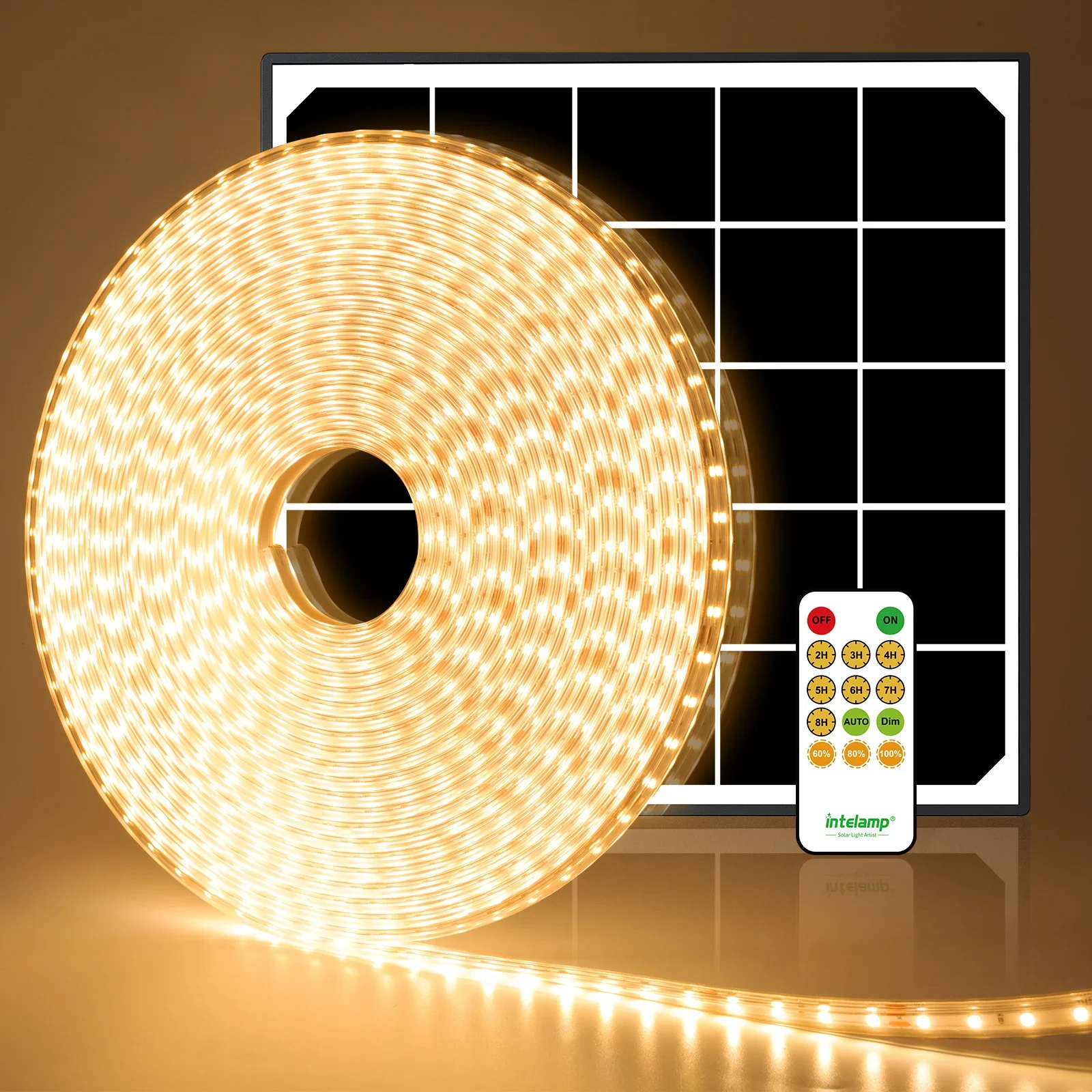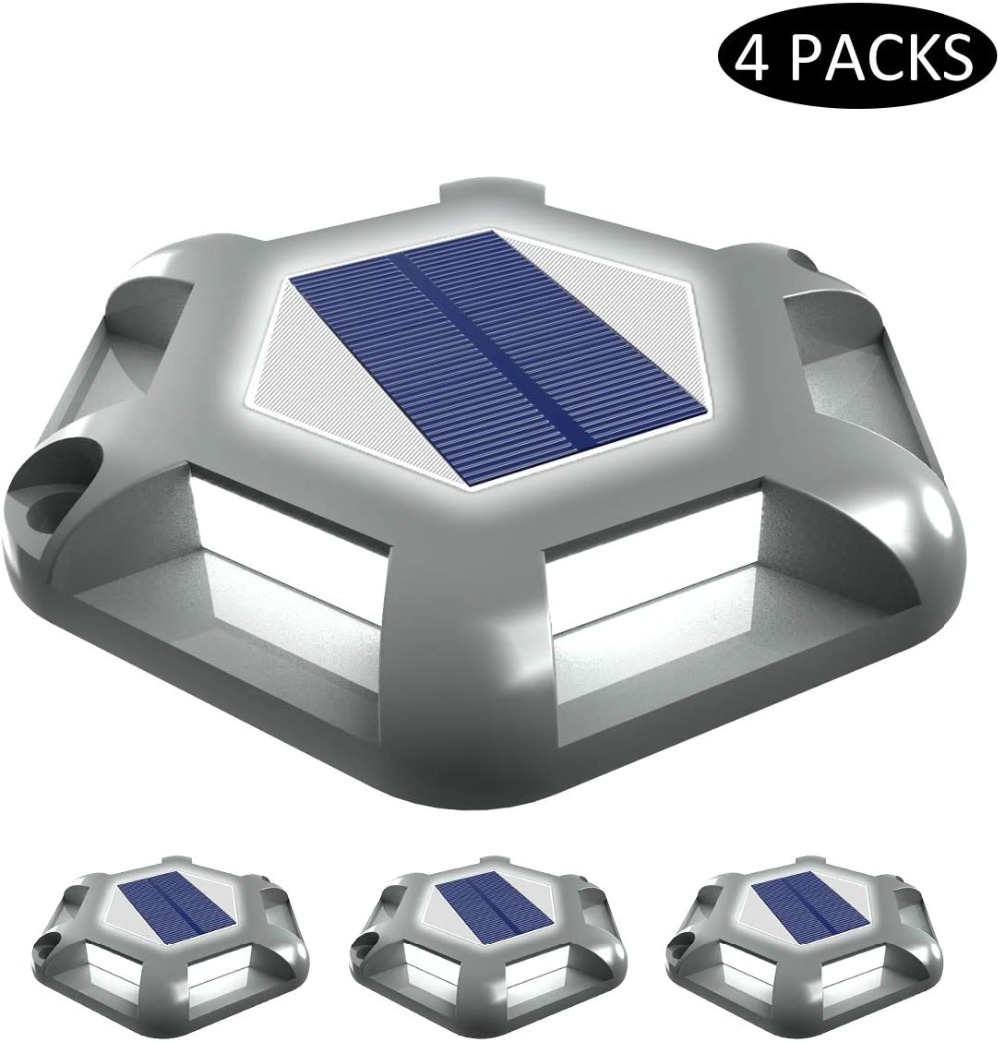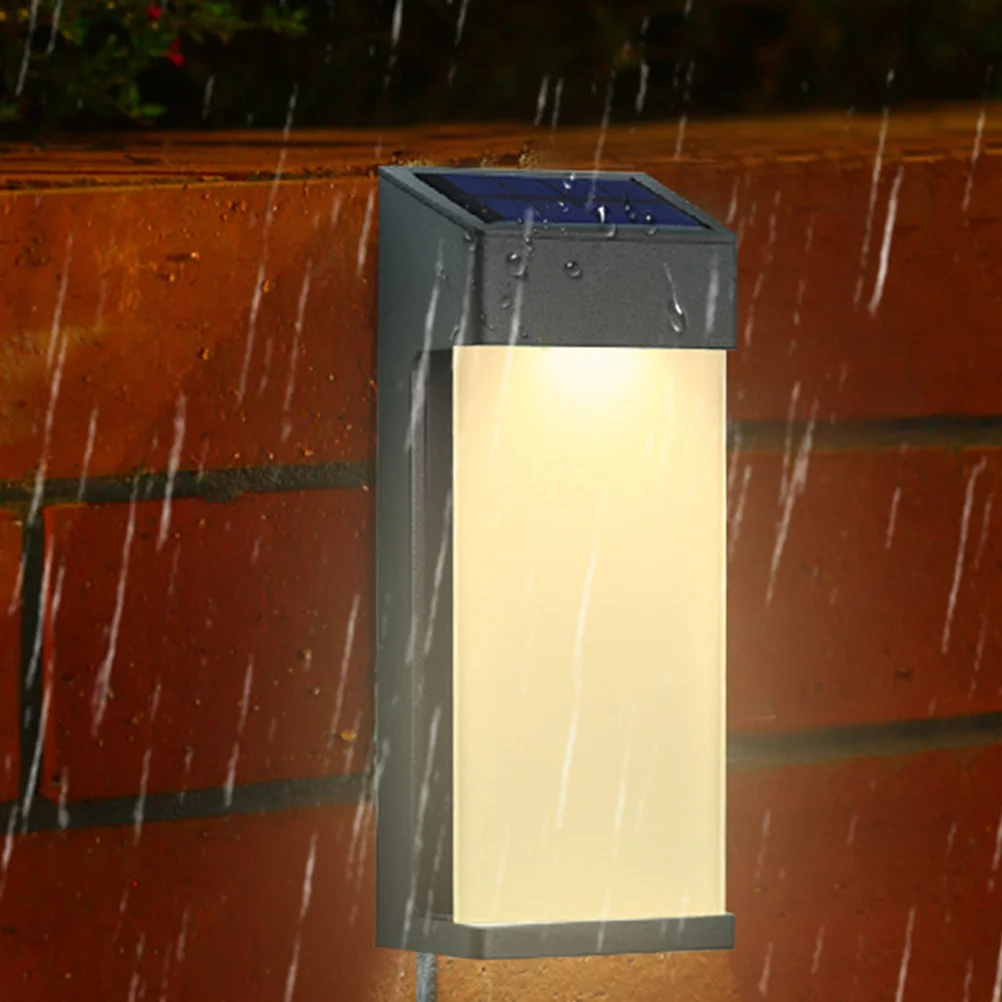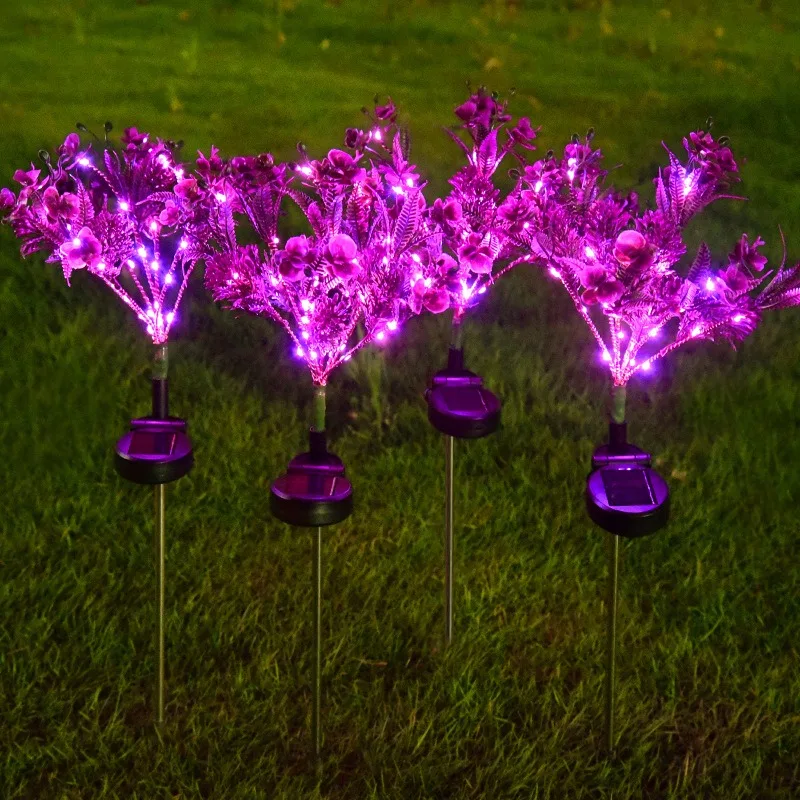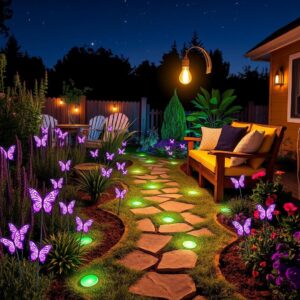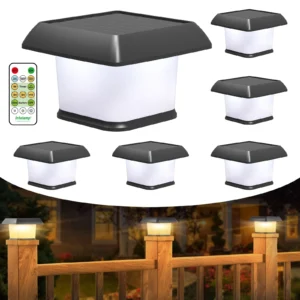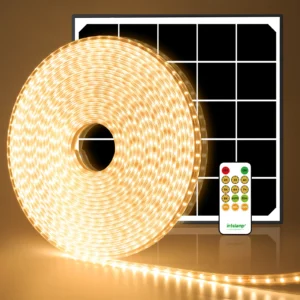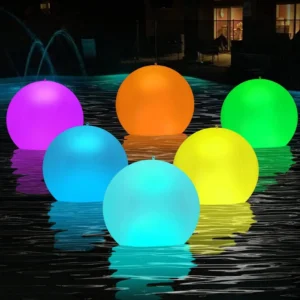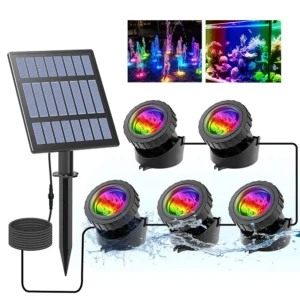Solar Phalaenopsis Flower Light – Decorative Outdoor Garden Light
Introduction
Imagine stepping into a garden that buzzes quietly with soft pools of light, all powered purely by the sun’s gift. Solar lights have made that magic simple—no wires, no electricity bills, just nature’s own energy weaving warmth through your outdoor spaces. But what happens on those endless rainy days or when your solar lights are tucked away indoors during winter? The truth is, while sunlight is the star player in charging these lights, it’s not the only option. Knowing how to charge a solar light without sunlight isn’t just handy; it’s essential if you want your little garden beacons to glow consistently, no matter the weather or season.
This article dives into practical tips to keep your solar lights shining even when direct sunlight is scarce. We’ll break down the realities behind the myths you’ve heard about solar charging—like whether artificial lights can really do the trick or if indoor charging damages the battery. Along the way, you’ll find expert advice on how to give your solar lights the energy boost they need without waiting for clear skies.
So, if you’ve ever found yourself wondering why a solar light dims too soon on an overcast afternoon or how to revive the glow without lugging your lights outside, you’re in the right place. Let’s shed some light on the lesser-known ways to power your solar garden magic, rain or shine.
Hummingbird Solar Lights Wind Chime with Color-Changing LEDs
Understanding Solar Light Charging Mechanism
Solar lights might seem like simple garden fixtures, but beneath their charming glow lies a clever dance of technology and nature. At their core, solar lights rely on solar panels—tiny sheets of photovoltaic magic—that convert light into electricity. When sunlight or even a suitable artificial light touches these panels, they generate power and stash it away in rechargeable batteries, typically lithium-ion types. These batteries patiently hold the energy through the day, releasing it after dusk to illuminate your outdoor spaces with that inviting, soft glow.
But it’s not just about soaking up any available light. The battery’s health plays a starring role in how long and how well your solar lights will perform. Proper care ensures they last season after season, while neglect or poor charging habits can shorten their lifespan. The way you charge these batteries—from direct sunlight to indoor artificial lights—has a significant impact on their endurance. Overcharging, undercharging, or inconsistent charging can all chip away at battery longevity, so understanding the right balance is key.
Imagine the battery as a small reservoir filling with sunlight’s energy. Pour in too little, and it won’t hold enough to shine through the night; pour in too aggressively with inappropriate light sources, and it might leak or degrade faster. That’s why recognizing the charging mechanism helps you make smarter choices when sunlight is scarce. Whether it’s a cloudy day or an indoor recharge, knowing how your panels and batteries interact guides you toward keeping the enchantment alive without draining the system.
Simply put, solar panels capture light, convert it to electricity, and the rechargeable battery stores this power until it’s time to light your path. Taking care of these batteries ensures they keep performing their quiet, reliable magic. So, whether you’re relying on sunbeams or well-placed indoor lamps, respecting the charging cycle means your garden stays aglow—no matter what the weather or season throws your way.
Solar Strip Lights Outdoor – 6000mAh 32.8FT LED Lights
Charging Solar Lights Indoors: Practical Methods
So, you’re wondering how to breathe a little life into your solar lights without a sunny day? Charging solar lights indoors might sound like a stretch, but with some straightforward tactics, you can keep those garden guardians glowing—even when the sun’s playing hide and seek.
Using Artificial Light Sources for Solar Charging
The core idea is that solar panels don’t strictly need sunlight—they can convert other light types into electricity, just not quite as fiercely. LED lamps, fluorescent bulbs, and even incandescent lights can serve as a substitute, though they don’t pack the same punch as the sun’s rays. To juice your solar light efficiently, place the panel within a few inches of the light source. Make sure the light hits the panel directly without shadows or obstacles stealing its power.
Expect the charge to creep in slowly. Aim for 6 to 12 hours under these artificial lights to gather enough power for decent nighttime glow. And remember, the nearer and stronger the light, the better the charge.
DIY Hacks for Indoor Charging
Want to get a bit crafty? Position your solar panels directly under bright indoor lamps. If you have mirrors lying around, angle them to bounce extra light onto the panels; this trick intensifies the illumination and speeds up charging. Also, keep those panels spotless—dust and grime are like tiny curtains, blocking precious light from the cells. A quick wipe with a soft cloth can significantly boost their efficiency.
Challenges of Indoor Charging
But let’s keep it real—indoor charging has its quirks. The power flow is gentler than sunlight, so you’ll need patience. Relying solely on indoor light can stretch charging sessions and, if batteries are repeatedly topped up slowly or left under dim light too long, can slightly shorten their lifespan over time. Think of it as giving your solar light a slow sip of energy instead of a full gulp; it works, but take care not to make it a chronic habit.
In short, indoor charging is a practical rescue plan when sunlight is scarce. With some clever placement, consistent care, and a bit of patience, you can keep your solar lights humming quietly through those dull, sunless spells—bringing a little sustainable warmth to those darker corners of your home.
4pcs LED Halloween Ghost Pathway Lights for Outdoor Decoration
Charging Solar Lights on Cloudy or Overcast Days
When the sky is cloaked in gray and the sun hides behind heavy clouds, it’s easy to assume your solar lights are doomed to flicker dimly or not shine at all. But here’s the truth: solar lights don’t stop working on cloudy or overcast days—they just have to work a bit harder. Though the direct sunlight weakens, it doesn’t vanish entirely, and solar panels still manage to soak up what little light filters through.
Cloudy weather does reduce the amount of energy your solar panels collect, often cutting their efficiency roughly in half compared to bright sunny days. However, that’s not the full story. The key lies in placement. Position your solar panels near windows or spots where natural daylight, even filtered, is strongest. A north-facing window or a balcony catching daylight can offer enough ambient light for a decent charge. Think of the solar panel like a sponge—while it doesn’t get drenched in rain, it can still absorb a steady drizzle.
To boost charging outdoors when the sun is shy, try using mirrors or other reflective surfaces to bounce and amplify the available light onto your solar panels. A simple angled mirror leaning close can redirect light that would otherwise miss your panels, almost like giving your solar light a sunny little nudge even on dull days. Metallic surfaces, light-colored walls, or even whiteboards nearby can do the trick by scattering light around, effectively brightening the surroundings.
Strategic placement also matters. Elevate your solar lights to avoid shadows cast by trees or buildings. Angle the solar panels toward where the most daylight comes through; this may mean adjusting them several times if clouds drift or the sun’s angle changes. Think of it as teaching your solar lights to chase daylight in the gray.
In short, while cloudy days turn down the volume on your solar light’s charge, they don’t silence it. With some thoughtful positioning and a dash of reflective ingenuity, your eco-friendly glow can keep shining gently through even the murkiest skies.
Solar Deck Lights for Outdoor Illumination and Decoration
Debunking Common Myths about Solar Light Charging
Let’s cut through some of the fog around solar light charging. Plenty of folks believe these lights only come alive bathed in direct sunlight — like they’re sun worshippers with no other options. But that’s just not true. Here’s what you really need to know.
Myth 1: Solar Lights Require Direct Sunlight Exclusively
Truth? Solar panels are smart little converters that can draw power from any light source, not just the blazing sun. Sure, they’re at their best with direct sunlight pouring in, soaking up energy like a sponge. But cloudy days, shaded spots, or even indirect daylight can still keep them ticking, just slower. Think of it like charging your phone — plugging it in fully is quickest, but trickle charging in low power mode still keeps the battery from draining.
So don’t toss your solar swag into the dark corner just because a cloud covers the sun. Any beam of daylight has some juice to spare.
Myth 2: Artificial Light Cannot Charge Solar Lights
Here’s a good one to chuck aside. Artificial light, such as LEDs, fluorescents, or even incandescent bulbs, can indeed charge solar panels — only not as fast or as fully as the sun. The catch? Your solar panel needs to bask as close as possible to these light sources, under a bright lamp for several hours. Place it in a gloomy spot and you’re wasting time and battery health.
Think of it like filling a bucket. The sunshine is a firehose; artificial light a steady drip. It works, just differently.
Myth 3: Charging Indoors Damages the Battery
Indoor charging isn’t some dark ritual that harms your batteries. The key is balance and patience. Charging under low-intensity light for a very long stretch is no threat to the rechargeable cells inside. Problems arise only if you repeatedly let the battery drop too low or overcharge it with high-powered sources not designed for solar batteries.
Keep it simple: give your solar light clean panels, a steady charge near bright lamps, and occasional fresh air. Your batteries will hum along just fine.
In sum, solar lights are far more adaptable than many believe. They thrive not just in pure sun but can make do with creativity and care indoors or on gloomy days. Embrace these truths, and you’ll unlock the full magic of your solar-lit garden no matter what the skies decide.
Waterproof Solar LED Garden Light for Outdoor Spaces
Expert Tips for Maximizing Solar Light Charging Without Sunlight
When sunlight slips behind the clouds or you’re stuck indoors, keeping your solar lights charged doesn’t have to be a lost cause. With a few smart moves, you can keep those flickering lanterns glowing without waiting for the sun to shine. Here’s how to get the most out of your solar light charging using expert-approved strategies.
Use of LED Lamps Mimicking Sunlight Spectrum
First off, LED lamps are your best indoor friends for charging solar lights. Unlike older bulbs, many modern LEDs emit a light spectrum that closely mimics natural sunlight—especially those with “full spectrum” or “daylight” labeling. This means they provide the kind of light solar panels can efficiently turn into power. Just imagine your solar panel basking in a steady stream of LED brilliance, soaking up energy like it does under the sun. LEDs are also energy-efficient and run cool so they won’t damage your solar equipment or waste juice.
Avoid using low-intensity or colored lights that don’t match the solar panel’s needs. Incandescent bulbs emit a warm glow but consume too much energy, while typical fluorescent bulbs can work but aren’t as consistent or effective as good quality LED lamps. If you want your solar lantern or garden stake glowing tonight, invest in a reliable LED lamp with a daylight spectrum for the best charge.
Optimal Positioning and Duration
Positioning is everything. Place your solar panel directly under the LED light source—no shadows, no angles. Imagine placing it like you would a plant craving sun: where light hits fullest and strongest. Keep the panel flat and secure it so it doesn’t shift away from the lamp. Distance matters too; the closer, the better. Typically, 6 to 12 inches from a bright LED lamp gives your batteries a steady charge without overheating.
Charge duration varies based on your LED’s power and your battery’s condition. A solid 6 hours under good LED light usually delivers enough juice to power your solar light through a decent evening. If it’s a weaker bulb or your batteries are near the end of their lifespan, you might need to extend that to 8 or 10 hours. Think of it as a slow, steady feed—patience pays off.
Routine Solar Panel Maintenance
Don’t underestimate the power of a clean solar panel. Dust, dirt, and fingerprints are tiny thieves, stealing precious light and cutting down charging efficiency. Give your solar panels a gentle wipe every week or two, especially if you’re relying on artificial light indoors. Use a soft cloth and a bit of water—avoid harsh chemicals that might eat away the panel’s surface.
Regular maintenance keeps your panels at peak performance, so even when charging indoors, they soak up every bit of light. Plus, a clean panel will last longer, saving you from premature replacements and keeping your garden glowing sustainably.
With these straightforward tips—choosing the right LED lamps, positioning your panels just right, and keeping them sparkling clean—you’ll extend your solar lights’ glow well beyond sunny days. Turn cloudy evenings or indoor hours into power-packed moments and watch your garden shine bright, no matter the weather.
6 Solar Mushroom Lights – Colorful LED Outdoor Garden Decor
Additional Resources and Further Reading
When it comes to charging solar lights without direct sunlight, having reliable sources to turn to can make all the difference. Whether you’re a beginner curious about the basics or someone eager to dive deeper into techniques and troubleshooting, the right guidance can clear up confusion and set you on the path to glowing success.
Here are some solid resources that cut through the noise and offer practical advice:
WikiHow: How to Charge Solar Lights Without Sun
If you want a straightforward, step-by-step approach, WikiHow lays out clear instructions with approachable tips. It’s great for visual learners who appreciate photos and easy-to-follow lists explaining how you can get those solar lights humming indoors or on gloomy days.Solaratics: Ways to Keep Solar Lights Charged on Cloudy Days
This resource digs into the less-than-perfect weather challenge. It offers clever strategies to maximize charging even when the sun’s playing hide-and-seek. From using reflectors to smart panel placement, it’s packed with real-world advice that balances practicality with simplicity.Light Supplier: Charging Solar Lights Without the Sun
Light Supplier breaks down myths and facts, helping you understand the nuances of artificial lighting as a charging option. Their insights into how different types of lamps mimic sunlight can help you create the best indoor charging setup.Maverick LED: Debunking Common Myths About Solar Lighting
Myths can cloud judgment and make solar lighting seem complicated. Maverick LED’s blog delivers a no-nonsense take on what’s true and what’s not, clearing up misconceptions about battery life, charging indoors, and more—for those who want smart solar solutions without the fluff.Jackery Blog: Charging Solar Lights Without Sun
Jackery’s blog complements practical tips with a touch of science, explaining solar panel efficiency and battery care in plain language. It’s a great resource if you want to understand the “why” behind the charging methods, which helps you make better choices.Homes and Gardens: How to Charge Solar Lights Without Sun
Perfect for garden lovers, this article combines solar knowledge with outdoor styling ideas. It inspires while educating, showing how to keep your garden lit and lovely no matter the weather.Solar LED Light: Tips on Charging Solar Lights Without Sun
Offering hands-on tips and hacks, Solar LED Light focuses on DIY approaches to indoor and cloudy-day charging. It encourages a can-do attitude, making solar light care feel accessible and fun.Sunwise USA: Expert Solar Light Charging Advice
For readers who appreciate expert opinions, Sunwise USA provides authoritative and detailed advice on solar charging techniques. Their guidance blends technical understanding with user-friendly recommendations.
Exploring these resources will enrich your solar light journey and empower you to charge your lights confidently, regardless of the sun’s mood. With a blend of approachable how-tos, myth-busting insights, and practical hacks at your fingertips, you’re all set to bring a dependable glow to your outdoor oasis—even on cloudy days or cozy nights inside.
Solar Phalaenopsis Flower Lights – 4-Pack Decorative Outdoor Lights
Conclusion
Charging your solar lights without direct sunlight doesn’t have to be a mystery or a frustrating chore. We’ve walked through practical ways to keep those magical garden glows alive even when the sun is hiding behind clouds or you’re stuck indoors. Remember, solar panels aren’t picky—they just need light, whether it’s the natural sun or a bright LED lamp inside your home. Placing your solar lights close to an artificial light source for several hours can do the trick, and simple hacks like reflecting light with mirrors or keeping panels clean can boost performance without any fancy gear.
It’s also important to ditch the myths that can hold you back. Solar lights don’t demand exclusive sunbeams to charge, and artificial lights aren’t villains to your battery’s health. As long as you’re mindful—giving batteries gentle care and avoiding overreliance on weak light sources—you’ll keep those rechargeable cells happy and ready to shine night after night.
So don’t hesitate to experiment with indoor charging if weather or space limits your access to sunlight. A little attention to where and how you place your lights can make a world of difference. Think of it as nurturing a tiny, eco-friendly lantern that thrives on light in all its forms.
In the end, solar lights offer more than just illumination—they bring charm, sustainability, and a touch of wonder to your outdoor spaces. Armed with these tips and a clear understanding of how solar charging works without sunlight, you can keep your garden glowing come rain or shine. Give it a try, stay curious, and let the gentle glow light your way, no matter the sky above.

